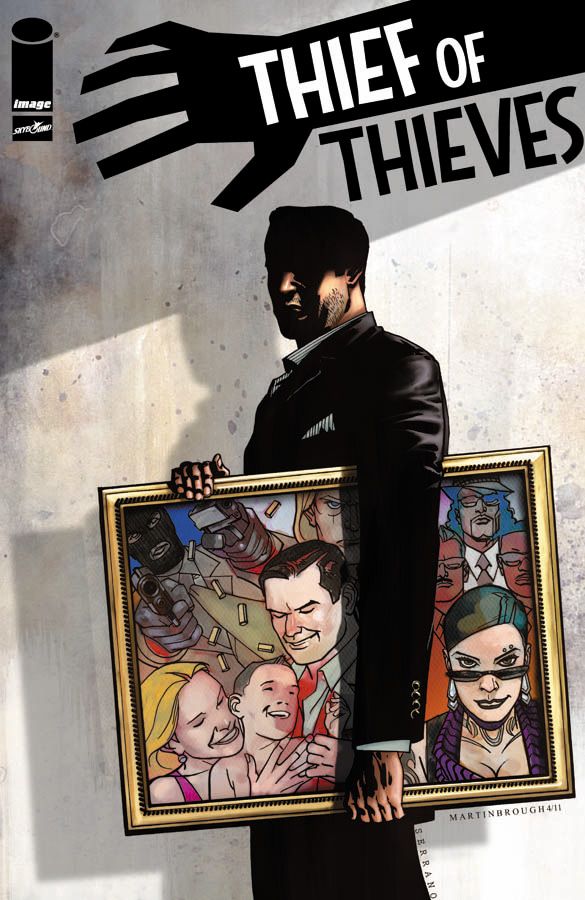"Thief of Thieves" is the new heist comic created by Robert Kirkman to bring the television Writer's Room concept to comics. In this arc, he's joined by "Morning Glory" writer Nick Spencer, and the pair tell a convincing story filled with cons and deceptions, drawn by a top notch talent, and well worth your time and attention.
The story has some familiar elements, such as the veteran planning the big job, the mentoring role he's taken on, and the sexual tension between the two leads. It starts off as a heist story, so you know things aren't going to be what they seem and a final reversal will pull the rug out from under you again. These are not new elements, but they are arranged nicely.
That's merely a surface reading, though. The final page revelation turns the "one life-changing job" trope on its head. The master/apprentice relationship opens in a clever and well-orchestrated way. And the whole opening gambit to the issue is entertaining, even more so because we haven't been introduced to the cast of characters at that point, so there's no knowing who's a bystander, who's a main player, and who's disposable.
Kirkman and/or Spencer even bring back title cards, giving each scene its own headline, kind of like what Christopher Priest did so well back on "Black Panther" and "Quantum & Woody." The timing of the pages is well done, too, with punchlines happening at the bottom of pages, and silent panels telling a story more than just filling space. Spencer's dialogue is sharp, with characters spouting character-revealing dialogue that's entertaining and speedy. Even when we get to a page where the exposition creeps in, the flow of the words keeps the book moving along.
Artist Shawn Martinbrough goes widescreen with this comic, with nearly all of the panels stretching from left to right, usually stacked four high. The few exceptions place an extra panel on a tier to fit in an extra beat in a dialogue-heavy scene. They're timed well and serve the story.
But the regularity of the panel shape makes the pacing of the story so much more important. By choosing this limitation, the artist is forced to stage scenes and angles on his art that he might not otherwise use. To Martinbrough's credit, there's not a single panel that looks like a stretch. They all look carefully chosen to tell the story and not just to fit a preconceived storytelling gimmick. As a bonus, it brings us different angles on scenes than the boring old mid-range camera show we'd normally expect.
The only bad panel in the book is the last one, a full page splash in which the lead character's arm looks like it's become detached from his body. It might be a problem with the coloring between the arm and background running together too much, but I think it's more likely a bad bit of forced perspective.
"Thief of Thieves" is off to a good start, setting things up nicely without feeling like 'just' a set-up issue. There's a good story in the issue, but it's also one that leaves you with just enough of a hangover to want to come back next issue.

